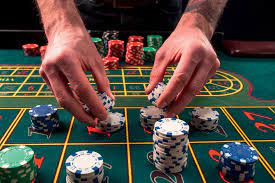While most individuals successfully reduced gambling activity during the COVID-19 lockdown, some remained at high levels; these individuals are at a greater risk for harm due to gambling and may require tailored prevention and treatment interventions.
Even after numerous efforts to estimate pathological gambling prevalence, there remains little research on this subject. Most studies use convenience samples which may be subject to selection bias.
Legality
Gambling is a popular pastime, and states often encourage it as a source of revenue for public services. Critics contend that gambling can also serve as a source of corruption and criminality in local communities where casinos operate; others see gambling venues as tax increases on these same areas.
Studies have linked legal forms of gambling with state-level rates of problem gambling. These studies used various measures of exposure such as legal gambling types available and length of legal gambling tenure in each state; as well as demographic differences.
These studies indicate that states with more legal gambling offer higher rates of frequent and any gambling as well as problem gambling; however, it should be noted that any correlations may not necessarily be causal.
Taxes
State governments in the US collect various gambling-related taxes from lotteries, casinos, parimutuel wagering (such as horse racing) and sports betting operations – often known as “sin taxes.” These payments help fund public programs.
Gambling may provide entertainment and diversion, but for others it can become an addiction that causes serious damage to their lives – including criminal behavior and the dissolution of family and social relationships. Furthermore, compulsive gambling has detrimental repercussions for society as a whole.
First step to understanding gambling’s costs is identifying its activities associated with harm. Researchers should then assess which products gamblers spend money on and the associated costs; using this data, the total societal cost per pathological gambler can then be estimated based on annual cost estimates provided in previous studies.
Regulations
Regulation of gambling aims to generate revenue for governments while mitigating any associated harms associated with the activity, including unemployment loss, debt repayment problems, crime and health deterioration – issues experienced not only by gamblers themselves but also their families, communities and society as a whole.
Recent studies have demonstrated a decline in gambling participation and indicators of problem gambling in Norway, for instance. This can be attributed to the ban of note acceptors and new regulations for gambling machines – both activities which affected an entire population’s gaming activities – so accurate and reliable data must be gathered through different means: randomized control trials are an ideal means of collecting such data which then be integrated into regression models to measure their impact – this approach being particularly useful when evaluating public policy interventions’ efficacy.
Social impact
Economic impacts can be relatively straightforward to measure; however, social impact analyses are more challenging. Such analyses must take into account both monetary and non-monetary effects that gambling may have on individuals as well as on communities/society at large; such impacts may even alter life spans of gamblers themselves and their loved ones.
Gambling participation tends to increase with age and decrease with socioeconomic status (SES). Adolescents are particularly prone to pathological gambling. One study of adolescents revealed that more than half stole money or possessions to finance their gambling while two-thirds sold items or used credit cards as funding methods for gambling activities. Young people aged 19-24 showed the highest rates of participation.
Studies that purport to investigate the social impacts of gambling typically focus on one aspect and fail to present a balanced overview. They often disregard real and transfer effects as well as tangible versus intangible benefits and costs; furthermore they may overlook how casinos may impact nearby communities.





